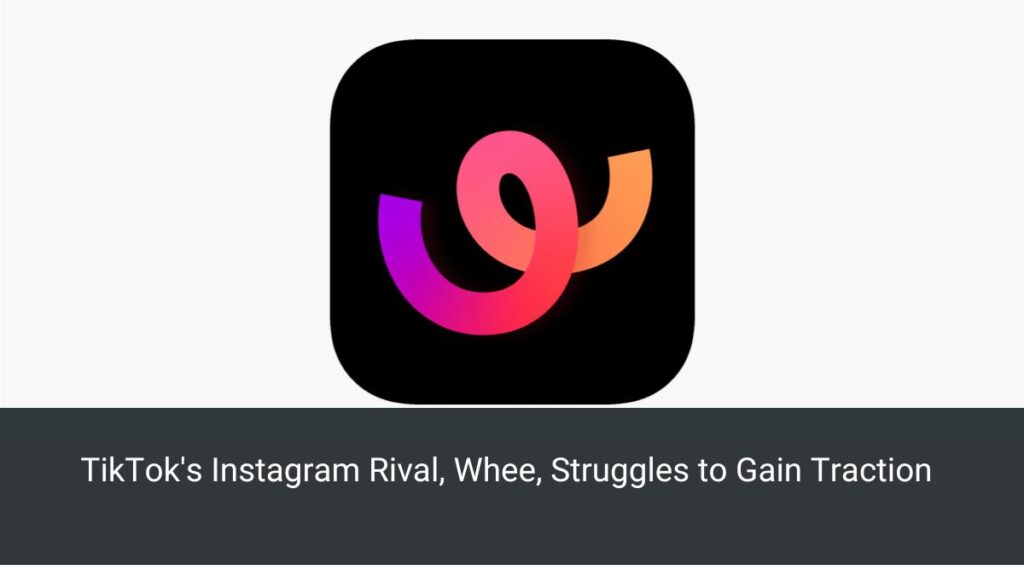TikTok, the popular short-form video app owned by Beijing-based ByteDance, has recently ventured into the photo-sharing social media space with the launch of Whee. This Instagram-like app, released in mid-June, aims to attract users with features such as photo filters and messaging capabilities. However, despite TikTok’s massive user base and ByteDance’s resources, Whee has not managed to capture significant attention or downloads. This article will explore the reasons behind Whee’s slow start, the strategies employed by ByteDance in the past, and potential future directions for this fledgling app.
Whee’s Launch and Initial Reception
Unheralded Debut
Whee quietly launched on June 18, 2023, in 71 countries worldwide. Despite the broad launch, the app has garnered relatively few downloads. As of late June, Whee had only achieved 13,000 downloads on iOS and slightly over 10,000 on Android. The lack of marketing support, particularly via Apple’s Search Ads, has contributed to the app’s low visibility. Without significant promotion, new apps often remain hidden in the crowded app store landscape, and Whee has been no exception.
Limited Geographical Reach
Interestingly, Whee’s downloads have been concentrated in markets outside the U.S. The top countries for downloads include Malaysia, Turkey, Saudi Arabia, Peru, and Indonesia, with Malaysia leading the way with 2,400 downloads. These numbers suggest that users in these regions stumbled upon the app rather than actively sought it out. The lack of substantial marketing efforts means Whee has not yet penetrated larger, more competitive markets.
User Feedback and Ratings
Tepid Reception
User feedback for Whee has been lukewarm. The app has an overall rating of 3.6 out of 5 on the App Store, based on 31 ratings, of which only 10 have written reviews. This tepid reception indicates that while some users find the app adequate, it has not impressed the majority. Common issues raised by users include limited features and a lack of differentiation from other photo-sharing apps like Instagram.
ByteDance’s Strategic Moves
Past Endeavors
This is not ByteDance’s first attempt to diversify its social media offerings. Earlier in 2023, the company launched Lemon8, another Instagram-like app, in the U.S. and U.K. ByteDance employed TikTok influencers to promote Lemon8, resulting in 2.5 million downloads in the U.S. by November 2023. While these numbers are respectable, they pale in comparison to TikTok’s user base, which boasts over a billion monthly active users globally, including 170 million in the U.S.
In addition to Lemon8, ByteDance operates CapCut, a popular video editing app often used for creating TikTok content. The company also experimented with TikTok Now, a BeReal competitor, which was shut down after less than a year. Currently, ByteDance is testing TikTok Notes, another Instagram rival. These ventures illustrate ByteDance’s persistent efforts to establish a foothold in various segments of the social media landscape.
Potential Future Strategies for Whee
Marketing Push
Given the slow start, a significant marketing push could help Whee gain traction. ByteDance could leverage its extensive network of TikTok influencers to promote Whee, similar to the strategy employed for Lemon8. Influencer marketing could introduce Whee to a broader audience and generate initial content, making the app more appealing to new users.
Feature Enhancements
To differentiate Whee from competitors, ByteDance could introduce unique features not available on Instagram or other photo-sharing apps. Enhanced photo editing tools, augmented reality filters, and exclusive content could attract users looking for a fresh experience. Additionally, integrating Whee more closely with TikTok could provide a seamless user experience across both platforms, encouraging TikTok users to adopt Whee.
Geographic Expansion
While Whee’s initial focus has been on smaller markets, expanding its presence in larger, more competitive regions could drive significant user growth. Targeted marketing campaigns in the U.S., Europe, and other major markets could help Whee achieve greater visibility and attract a more diverse user base.
Whee’s launch has been underwhelming, with low download numbers and tepid user feedback. However, ByteDance’s past successes and ongoing experiments in the social media space suggest that the company has the potential to turn things around. By investing in marketing, enhancing the app’s features, and expanding its geographic reach, Whee could become a viable competitor in the photo-sharing social media market. Only time will tell if ByteDance can replicate TikTok’s success with this new venture.
For now, Whee remains an app with potential, waiting for the right strategy to unlock its growth. As the social media landscape continues to evolve, ByteDance’s ability to adapt and innovate will be crucial in determining Whee’s future. If you start seeing your favorite TikTok influencers talking about Whee, it might be the beginning of its rise. Keep an eye on this space for further developments.

